The first in our series reviewing interesting sites you may come across as you visit the beautiful north shore on the island of Oahu. In this segment, learn about family camping, wandering chickens, divisions of ahu’puaha and the art of abandoned cars.
What’s up with large groups of campers along the shoreline
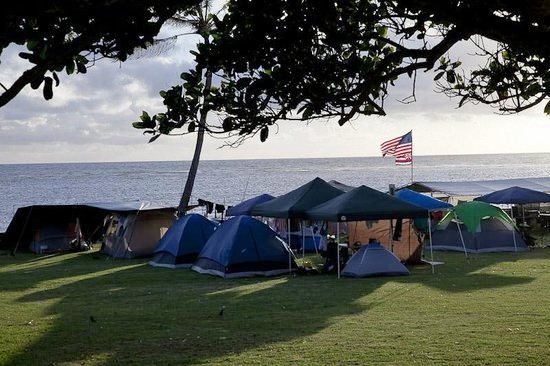
photo courtesy of tripadvisor
Camping is more than a leisure activity here along the North Shore. Hawaii is all about ‘ohana (family). And we’re not just talking immediate family. We’re talking about the whole extended bundle of aunties, uncles, cousins and even ol’ grandma and grandpa. Families will take the weekend, and maybe even an entire week off, throw up their tents and what we call EZ Corners (tarps and poles) and hold a good old fashioned family reunion. And these families know how to party! There will be lots of food, singing, dancing, and there will definitely be fishing and swimming. And don’t be surprised if you spot projection screens, commercial sized blow-up slides and stadium lighting. Like we said, these family get-togethers are serious!
Camping is allowed across the island, but beware! Don’t just set up your tent anywhere. Some parks and camping areas are privately owned. Even the state parks have designated areas and ALL campers must have a permit. Show aloha and take care of your area, respect the wildlife and the locals and most of all, have lots of fun!
What’s up with the Ahupua’a Signs?
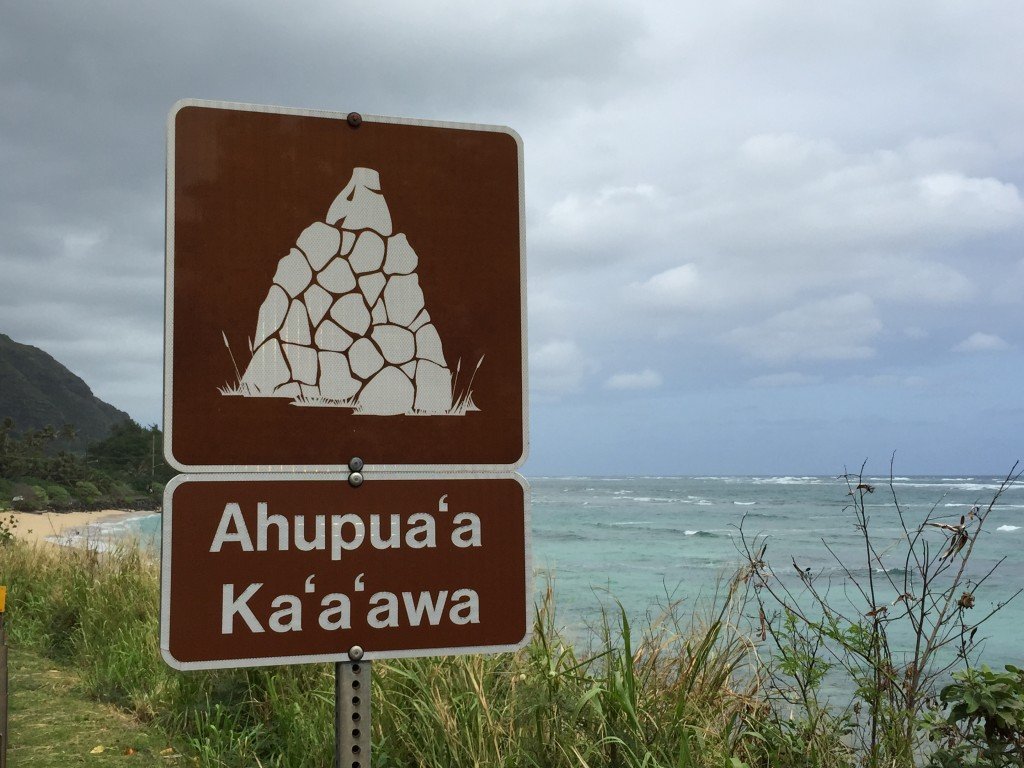
Photo courtesy of www.retreatnetwork.com
Have you noticed these signs every few miles as you drive around the island of Oahu? Each sign designates a different ahupua’a and includes the name of the designated community it was assigned to.
In the days of King Kamehameha I, land was divided up amongst ‘ohana (family) units. Each division was drawn to include a portion of the central mountain region, down thru the verdant valley floor, and out to the ocean shore and even into the seawater, past the reef. This region of land was designed to be self-sustainable, supplying ‘ohana with access to all levels of island resources.
If you’d like to see a working model of how this system works, come visit the Hawaiian village at The Polynesian Cultural Center. Completed in 2012, the Hawaiian village was designed as a mini Ahupua’a, or land division, to demonstrate the diversity of land use from the steep mountain ridges to the ocean below. Our village showcases a waterfall, which is situated between the Chief’s House and the Men’s Eating House. It represents the clear water coming from the verdant ridge tops into the plains section. We also display a functioning taro patch. Villagers would plant crops along the river before it was channeled through the village and down to shoreline fishponds, exiting into the ocean. If you come and visit us at the Polynesian Cultural Center, the Hawaiian villagers will be happy to demonstrate how these various stations created a balanced ecosystem that supported and nourished their villagers.
What’s up with all those chickens?
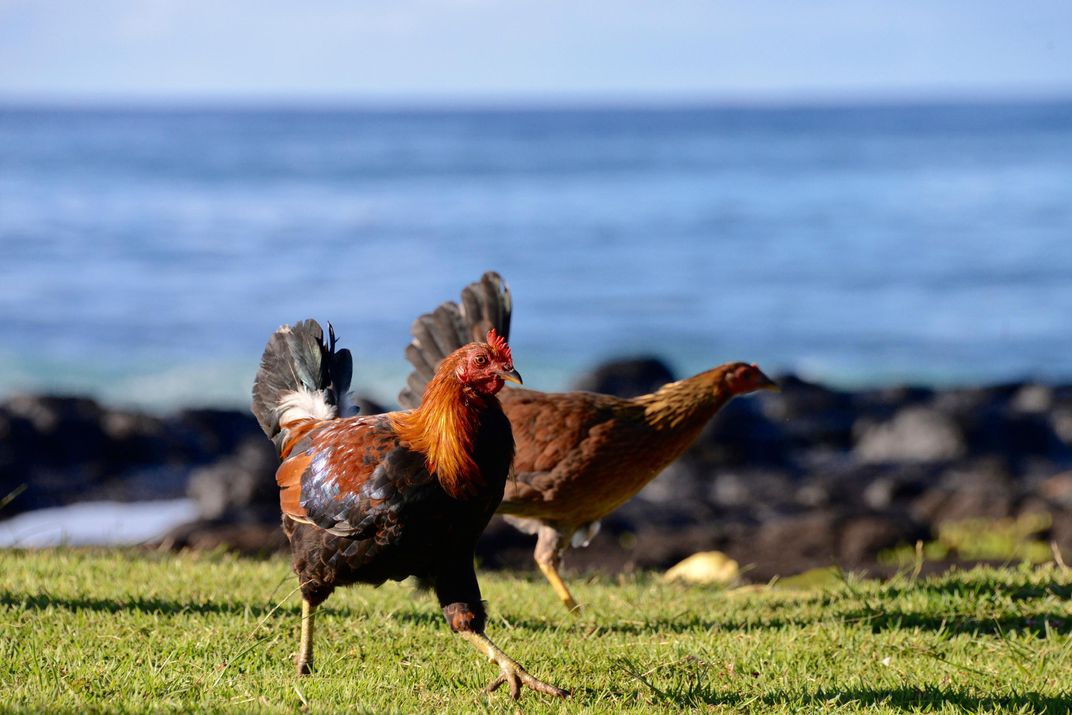
photo courtesy of Smithsonian Magazine
Chickens, chickens, CHICKENS! Here on the island, you see them EVERY WHERE, and depending on where you are staying, you may hear them too, but where did they come from? There is lots of supposition and urban legends, but studies and DNA establishes the following facts:
Chickens have been on the islands since the first Polynesian explorers arrived, bringing with them various food sources, including domesticated chickens. DNA testing shows that these chickens originated from Asian stock and were acquired by our ancient explorers through trade.
The population of chickens grew with the settlement of various cultures, including the Portuguese, who introduced fighting chickens.
Although a common legend is that the influx of free roaming chickens is due to hurricanes releasing domesticated chickens in the wild, studies show that the increase in the wild population was minimal after each hurricane.
Kauai was the first island to experience a rising volume of wild chickens, but the situation has slowly spread to each island.
But the burning question remains: “Is it true that it is illegal to kill chickens in Hawaii? Contrary to urban legend, ferral chickens are not specifically protected, however the State of Hawaii has enacted a strong anti-cruelty to animals law that prohibits the unnecessary killing of any animal (vermin excluded) (H R S § 711-1100 to 1110.5) and the Red Jungle Fowl is protected on designated preserves on the Island of Kauai.
What’s up with those abandoned cars along the roadside?
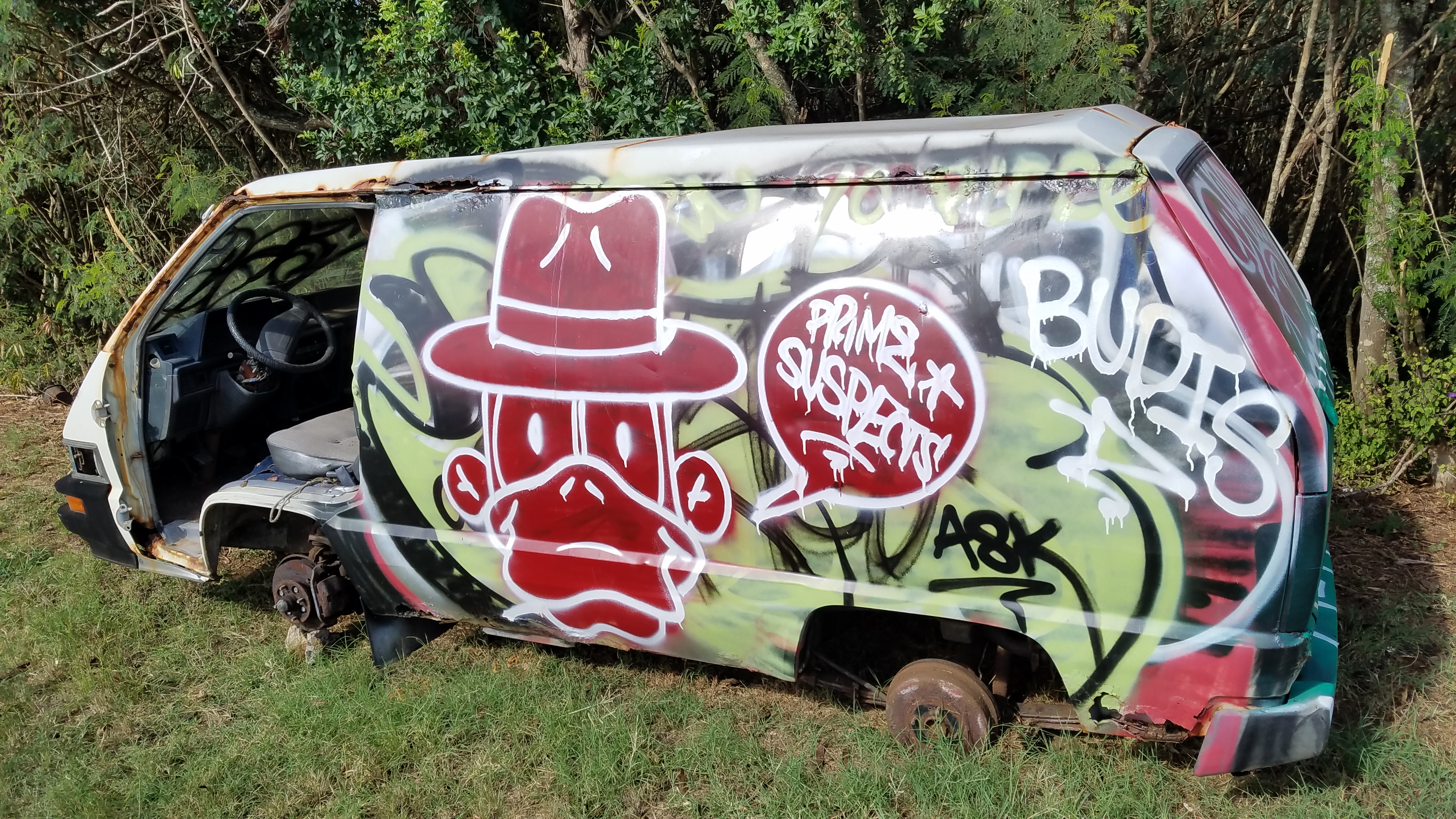
Being that we are a small island, it all boils down to limited resources. The cost of scrap metal has dropped so low that it will actually cost you to scrap your car. And that creates the current condition of abandoned cars. Much of our population is transient, meaning that they live here only for a few years. If you have an older model car, it becomes extremely difficult to sell. Additionally, you cannot scrap a car without a legal title. If you’ve lost your title, it takes money and time to replace it.
And so, yes, you will notice a number of abandoned cars along the roadside. No one is happy about it, but we recognize that the solution will not be easy or quick.
True to the island spirit, we keep our humor through it all. A local gave a tongue-in-cheek explanation to the situation when he commented: “EEEEAAAZZY, brah, too tired already to take ’em to da rubish dump…we get ’em laytah. Besides, you need reflectah? Take ’em, it’s right there. We no get O’Reilly’s like you haoles on da mainland.” (That’s Hawaiian Pidgin, if you’re confused, which is literally a recognized language.)
A newer phenomenon is burnt out cars that have been stripped, and in some cases covered in colorful graffiti. Where did that come from? There are two theories being batted about: a) the owner strips and then burns the car to erase all identifying serial numbers; or b) its a new hobby by hooligans. Both arguments have merit. The most likely answer is that it is a multi-step situation. The owner abandons the car. As soon as it becomes apparent that the car is abandoned, it gets stripped of any valuable parts that can be sold easily. Finally, mischief-makers come in to finish the job, and if they have an artistic flare, the car is given a new graffiti inspired paint job to boot.
The State of Hawaii, community organizations and local recyclers are keenly aware of the situation and are constantly looking for viable solutions.

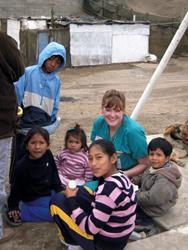
Nina S Jones
Nina Jones, a mainland gal from way back, is now a transplanted Islander. With her husband of 39 years, she volunteers at the Polynesian Cultural Center. Her hobbies include swimming, traveling, studying and writing about what she is learning from the various Polynesian cultures. Her blogs focus on their history, beliefs, practices and – as an added bonus – delicious food! To her, Polynesia is not just a place to visit, it is a way to live and she is very honored to be able to be a part of their amazing world.

I was just roaming descriptions of Haleiwa (long time resident here), and came across your delightful article & pictures. I would have just mosied on down the Net, but saw that no one had yet commented on your enjoyable article.
So, Mahalo, for spreading a bit of joy. I sincerely hope this isn’t so long after the publication, that you’ll not know that a person really felt happier for the reading. I especially laughed at the chickens and the abandoned,parted out, & painted car (would that they all be so interesting),
Gosh, how sweet. Thank you sincerely for writing. I won’t lie, it’s one of my favorites. Who wouldn’t love researching chickens, camping and burnt vans?
I am visiting Hawaii and appreciate this article because it literally answered all the questions I was asking about these various things! Thank you 🙂
We are so glad this was helpful to you. We hope to welcome you to the Center during your visit!
Came here for the Ahupua’a information, enjoyed the rest of the information. I was wondering about the cars and just thought they were makeshift homes for the homeless. I didn’t know people just abandon them. Maybe Hawaii can put together a demolition derby and a Monster Truck rally to use those abandoned cars as fodder 🙂
Thank you for this information.